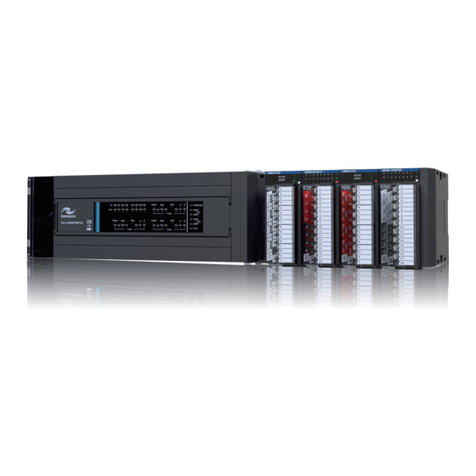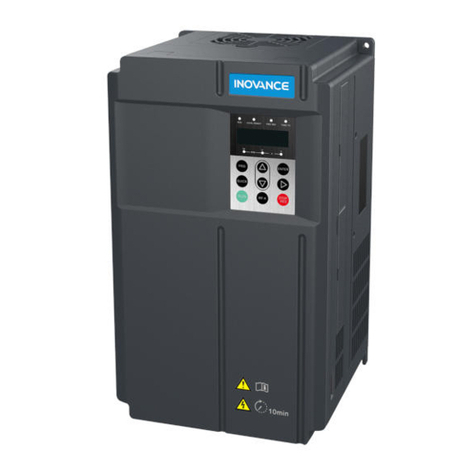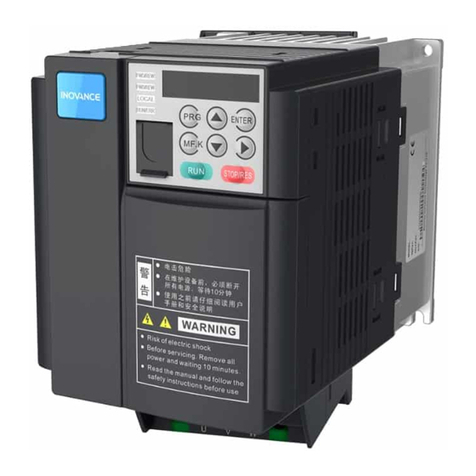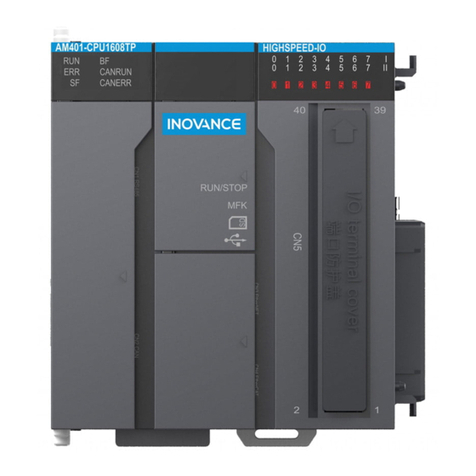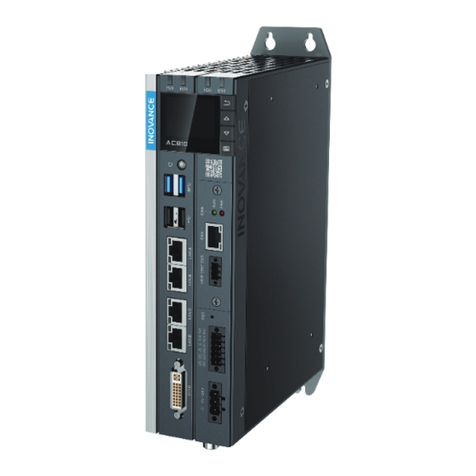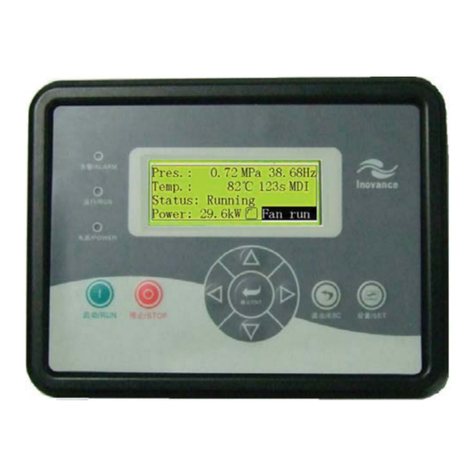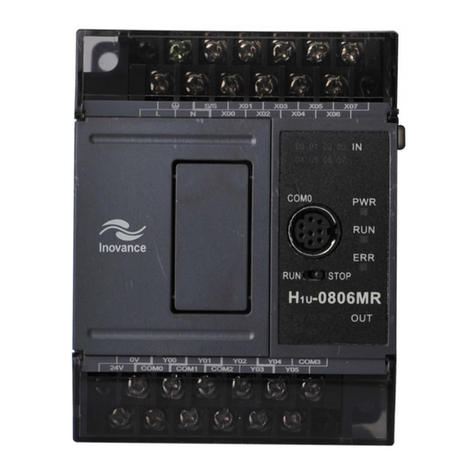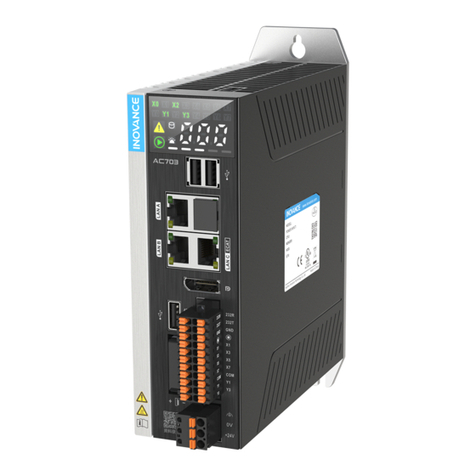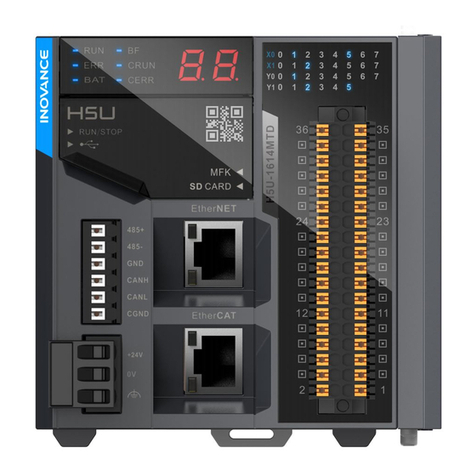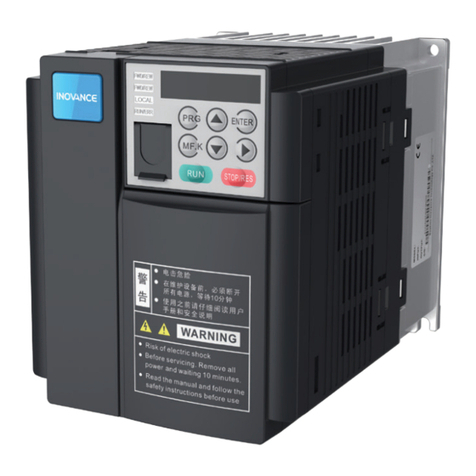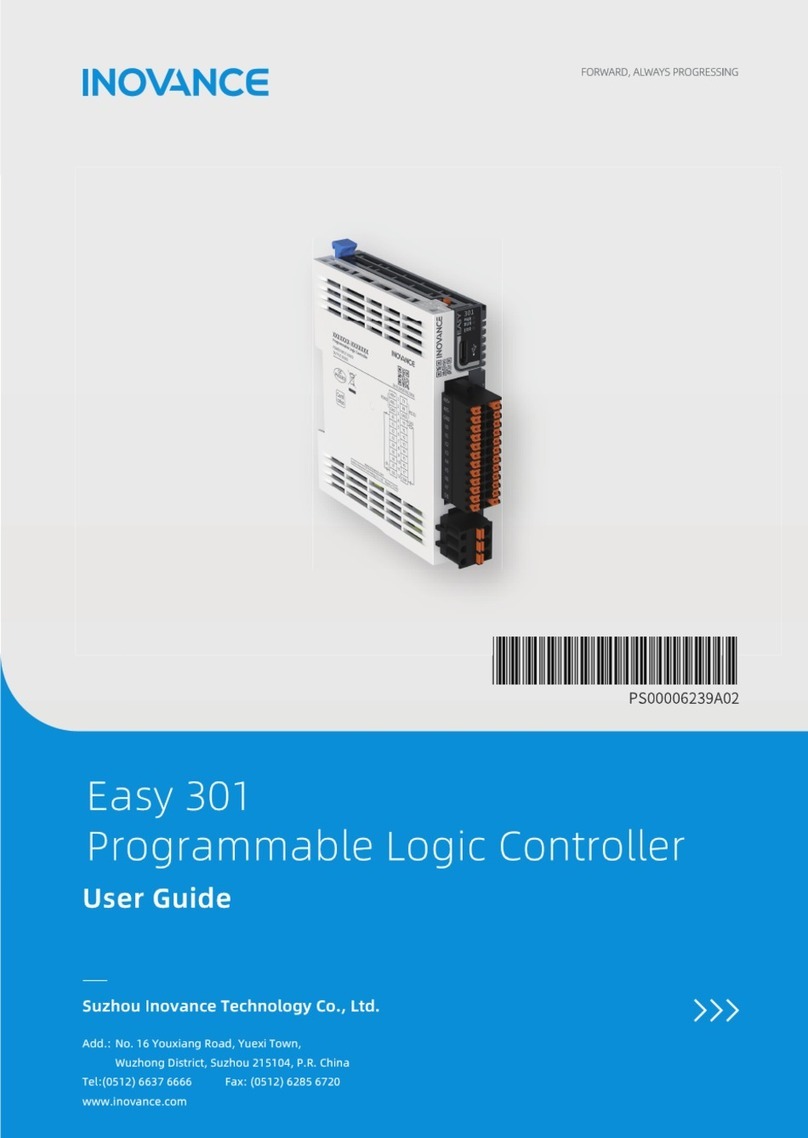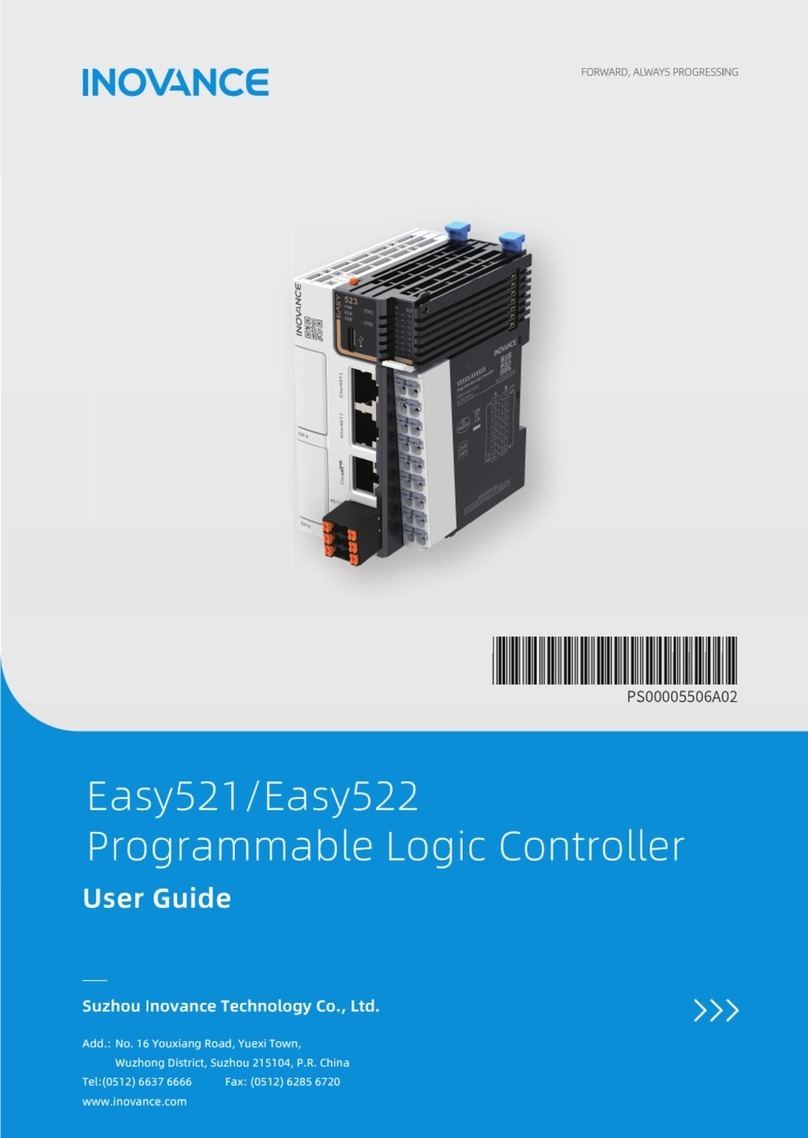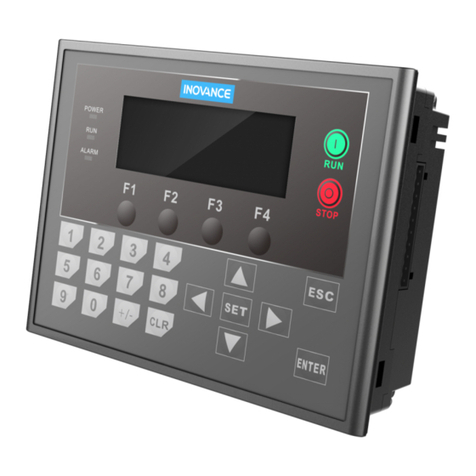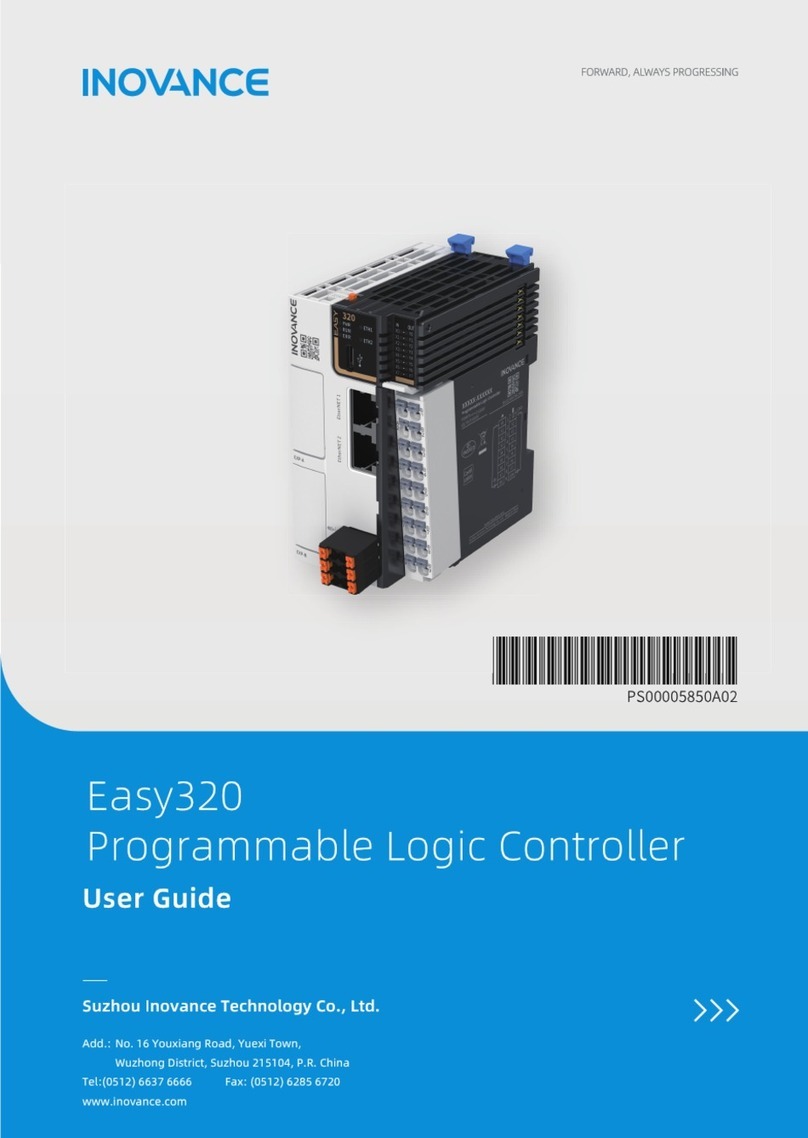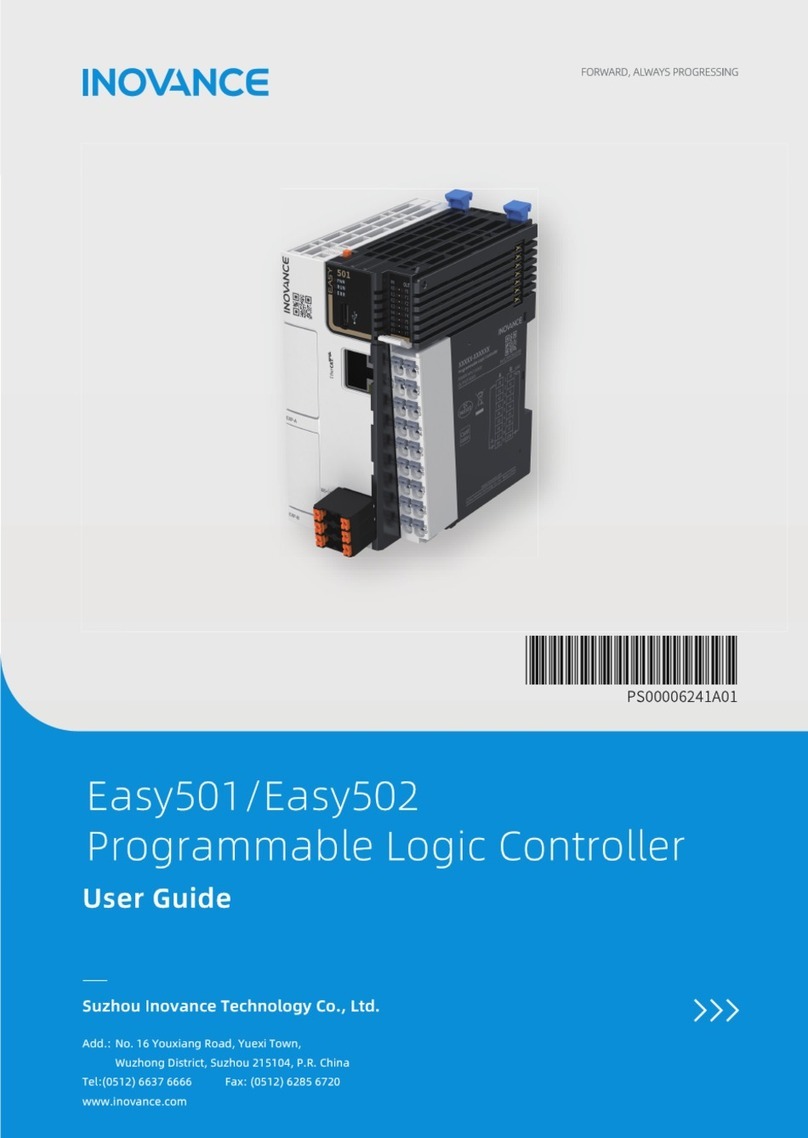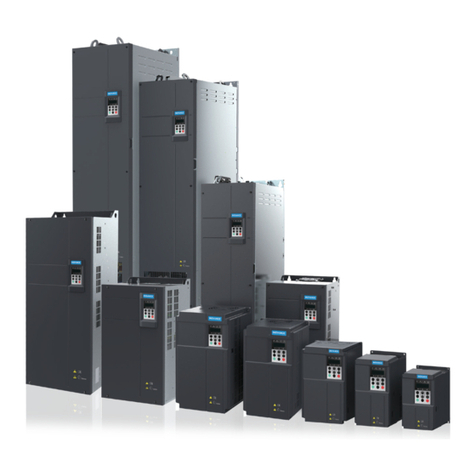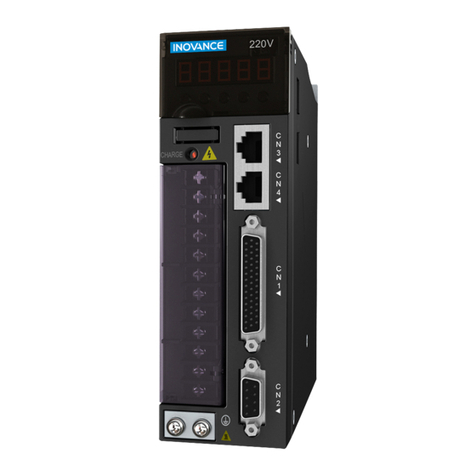7. Surge suppressor
The controller has a built-in voltage dependent resistor (VDR) for suppressing the surge voltage generated when
the inductive loads (electromagnetic contactor, electromagnetic relay, solenoid valve, electromagnetic coil and
electromagnetic brake) around the controller are switched on or off. If the inductive loads generate very high
surge voltage, use a surge suppressor for the inductive load or also use a diode.
Note
Do not connect the surge suppressor on the output side of the controller.
8. Altitude and de-rating
In places where the altitude is above 1000 m and the cooling effect reduces due to thin air, it is necessary to de-
rate the controller. Contact Monarch for technical support.
9. Adaptable motor
The controller is adaptable to squirrel-cage asynchronous motor or AC PMSM. Select a proper controller
according to motor nameplate. The default parameters configured inside the controller are squirrel-cage
asynchronous motor parameters. It is still necessary to perform motor auto-tuning or modify the default values
based on actual conditions. Otherwise, the running effect and protection performance will be affected. For
PMSM, motor auto-tuning must be performed.
10. Precautions on selecting residual-current circuit breaker (RCCB)
Tripping may be caused if an improper RCCB is selected when the controller drives the motor. This is because
the output wave of the controller has high harmonics and the motor cable and the cable connecting the
controller and the motor produce leakage current, which is much larger than the current when the motor runs at
power frequency (50 Hz). Thus, it is necessary to determine the proper RCCB sensitivity based on the general
leakage current of the cables and the motor. The leakage current is dependent on the motor capacity, cable
length, insulation class and wiring method. Generally, the leakage current on the output side of the controller is
three times of the current when the motor runs at power frequency (50 Hz).
1.3 Protective Functions
Adopting different protective functions for different levels of faults, the NICE1000 provides the elevator
running system with full abnormality protection. For detailed solutions to the faults, Faults of the controller are
classified as follows:
1. Speed abnormal
The controller monitors the encoder feedback speed and output torque. Once the feedback speed exceeds the
limit or the deviation between the torque limit and the speed feedback is too large, the controller performs
protection immediately, reports an alarm and prohibits running.
2. Drive control abnormal
The related faults include drive overcurrent, overvoltage/under voltage, power input/ output phase loss,
overload, and storage abnormality. If such a fault occurs, the controller performs protection immediately, stops
output, applies the brake and prohibits running.
